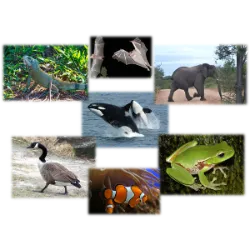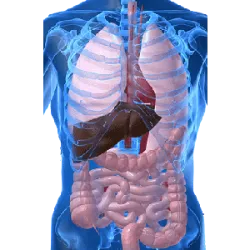It is responsible for receiving

It is responsible for receiving, processing and transmitting information in the body. It is composed of neurons, which generate and conduct nerve impulses, and glial cells, which offer support, protection and nutrition to neurons.
Features:
Formed by neurons (excitable cells) and glial cells (support and nutrition).
Ability to transmit electrical impulses.
High sensitivity to external and internal stimuli.
Classification:
Neurons:
Sensory: Receive stimuli.
Motors: Send commands to muscles or glands.
Interneurons: They make connections between neurons.
Glial cells:
Astrocytes: Support and nutrition.
Oligodendrocytes and Schwann cells: Myelin formation.
Microglia: Immune defense.
It is responsible for the movements of the body and organs

It is responsible for the movements of the body and organs, composed of elongated cells (muscle fibers) with the ability to contract due to the proteins actin and myosin. It is essential for movement, circulation and visceral control.
Features:
Composed of elongated cells called muscle fibers.
It has the ability to contract, thanks to the proteins actin and myosin.
High vascularization and energy consumption.
Classification:
Skeletal striated muscle:
Multinucleated cells and striations.
Voluntary hiring.
Ex.: Body movements.
Cardiac striated muscle:
Striated, with intercalated discs and branched fibers.
Involuntary and rhythmic contracting.
Ex.: Heart.
Smooth muscle:
No striations, fusiform fibers.
Slow and involuntary hiring.
Ex.: Visceral organs (intestine, vessels).
Test yourself with one of these challenges 👇
Discover some interesting facts about Human Tissues
Connective Tissue

It has functions of support, filling, protection, transport of substances (such as blood), energy storage (adipose tissue) and immunological defense.
Features:
Spaced cells: Separated by an abundant extracellular matrix.
Extracellular matrix: Contains fibers (collagenous, elastic or reticular) and ground substance.
Vascularization: Generally well vascularized, except in cartilage.
Classification:
Connective tissue proper:
Loose: Fibers that are poorly organized, filling and support (e.g. dermis).
Dense: Rich in fibers, greater resistance (e.g. tendons).
Specialized:
Adipose: Stores fat and energy.
Cartilaginous: Support and flexibility (e.g. joints).
Bone: Support, protection and storage of calcium.
Blood: Transport of nutrients, gases and defense.
Hematopoietic: Production of blood cells (e.g. bone marrow).
Epithelial Tissue

It lines body surfaces (such as skin) and internal cavities (such as organs). Its main functions include protection (Skin), absorption (Intestine, absorbs nutrients), secretion (glands), sensitivity (Sensory epithelia, such as in the retina) and exchange of substances (Lung alveoli).
Features:
Juxtaposed cells: Little space between them.
Avascular: No blood vessels; nourished by connective tissue.
High renewal: Regenerates quickly.
Polarity: It has an apical side (facing surfaces) and a basal side (connected to the basement membrane).
Classification Regarding layers:
Simple: One layer of cells.
Stratified: Multiple layers.
Pseudostratified: Appears to have several layers, but all of them touch the basement membrane.
Regarding cell format:
Pavement: Flat cells.
Cubic: Cubic cells.
Columnar: Elongated cells.
Test yourself with one of these challenges 👇
HOME









